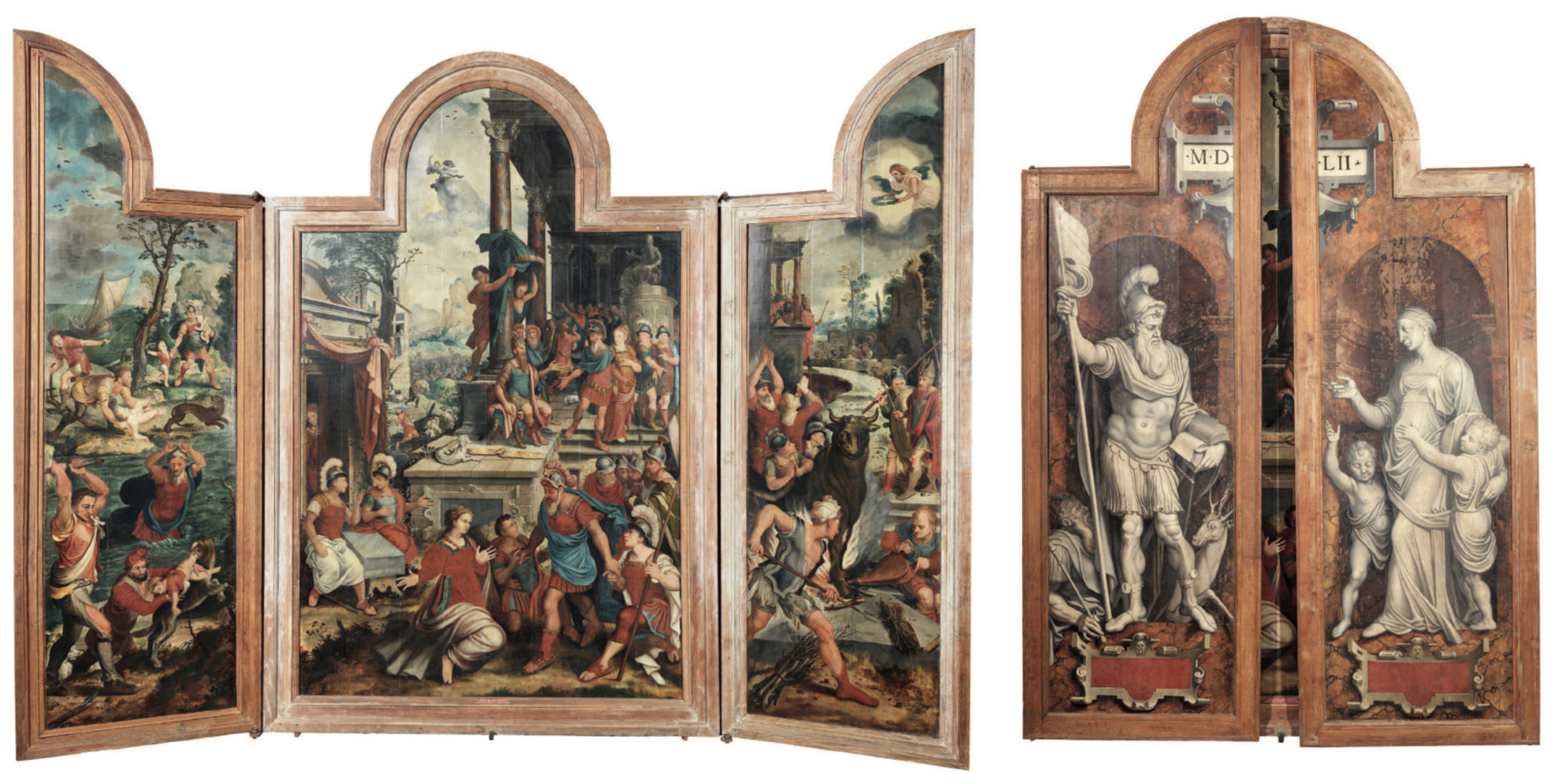
Van Heesch 2018
“Out of Bosch’s shadow: A rediscovered altarpiece by Jan Mandijn” (Daan Van Heesch) 2018
[in: Oud Holland – Journal for Art of the Low Countries, vol. 131 (2018), nr. 3/4, pp. 109-122]
The Antwerp City Archives (FelixArchief, Schepenregister 240, WG II, fol. 109) have a document showing that the well-known Bosch follower Jan Mandijn (active in Antwerp in the sixteenth century, the document calls him master Jan Demandyns) got a commission on 12th March 1550 to paint an altarpiece about the life of St Eustache for Zichem (a place in Belgium, not far from Louvain). The patron saint of the late medieval church of Zichem was indeed St Eustache, and in the early 1550ies the building knew some important changes. The Antwerp document was discovered by Jan Van der Stock and Godelieve Van Hemeldonck, independently from each other, but Van Heesch got their permission to publish the discovery.
Today, the Zichem church still owns a triptych devoted to St Eustache. According to an inscription, it was completed in 1552. This is most certainly the altarpiece that was commissioned in 1550, so now the painting can be given to Jan Mandijn. The Renaissance style of the work does not remind the viewer of the Boschian paintings produced by Mandijn. Moreover, the execution of the painting shows differences in quality, which suggests that Mandijn got the help of pupils and/or assistants. The Liggeren, the archives of the Antwerp painters’ guild, mention seven or more pupils of Mandijn, showing that Mandijn supervised a big and successful workshop. The new attribution of a triptych to Jan Mandijn implies that this painter was not only a follower of Bosch, and that his workshop produced paintings in various styles. This agrees with recent insights regarding other masters, such as Jan Gossaert, Frans Floris and Peter Bruegel, whose work is also characterised by varying artistic idioms.
[explicit 22nd January 2020]